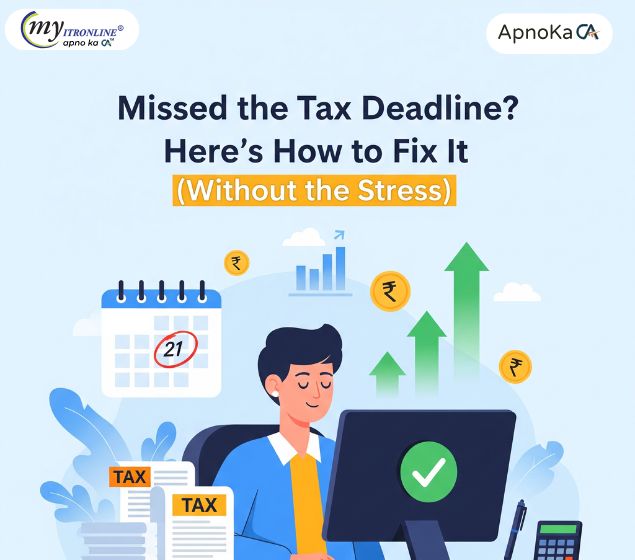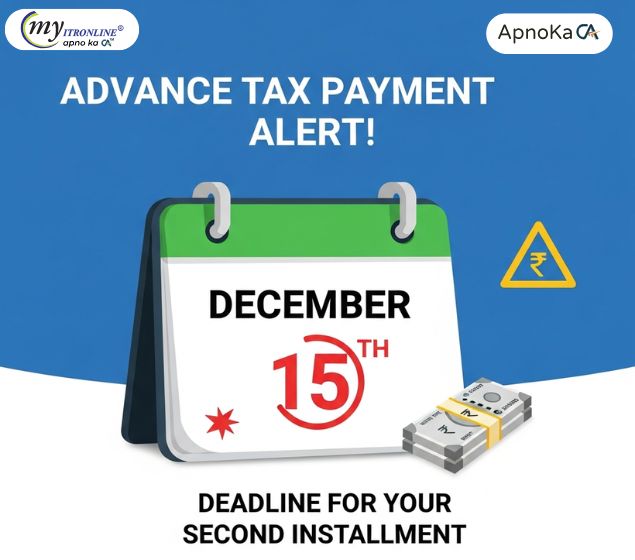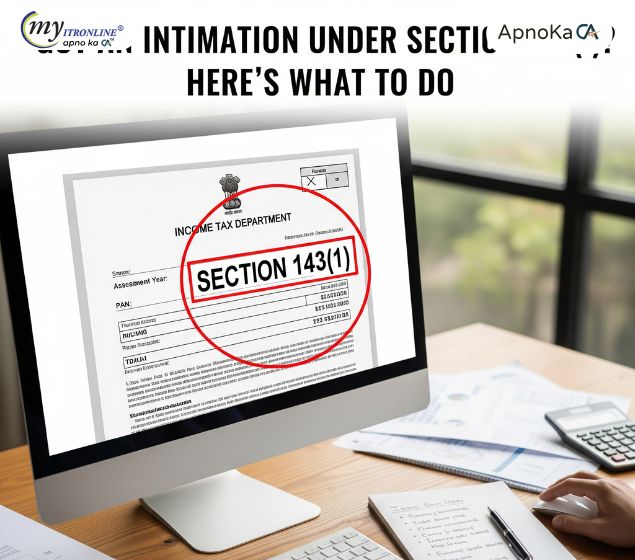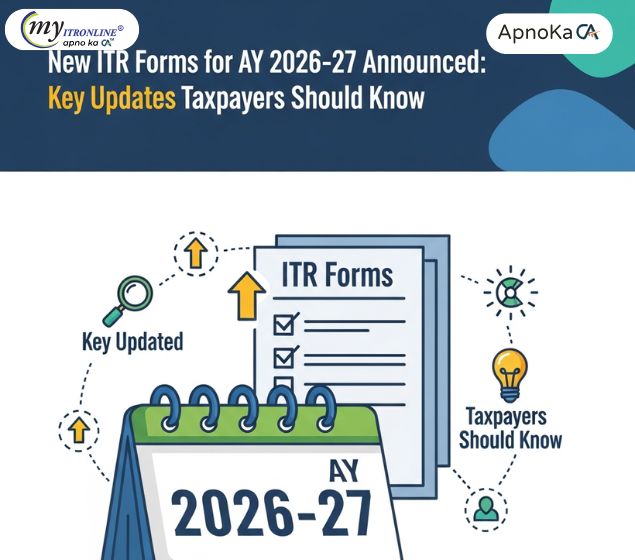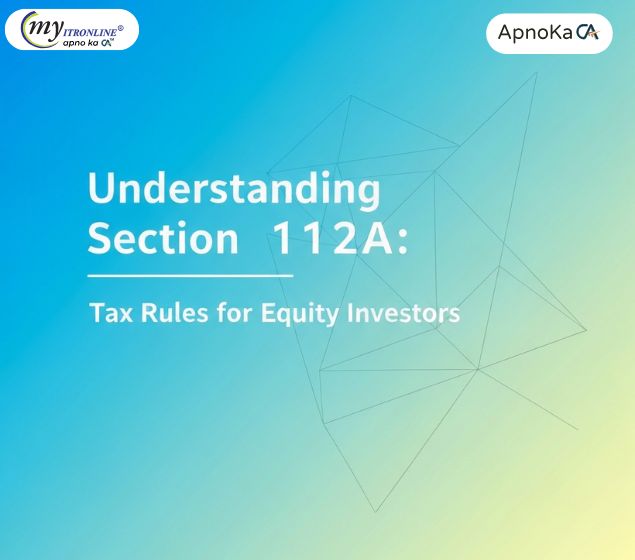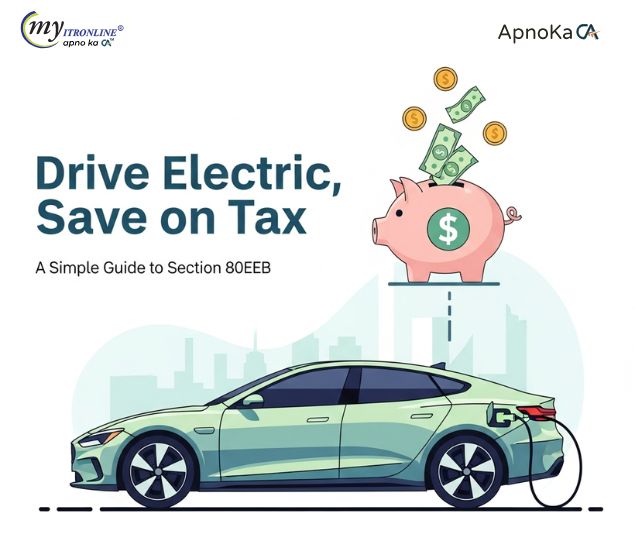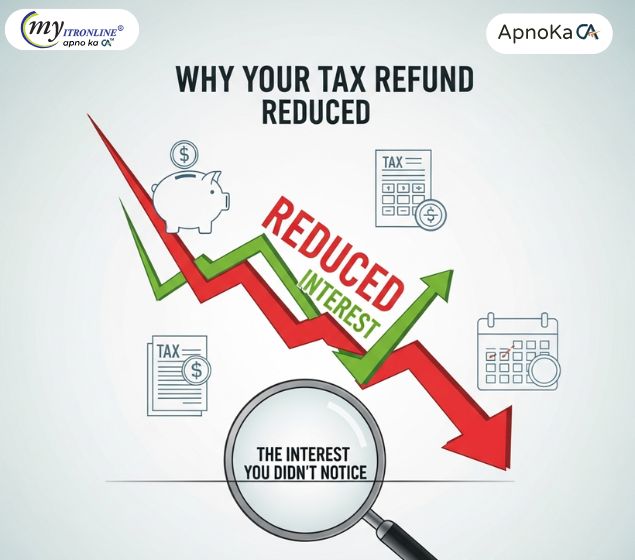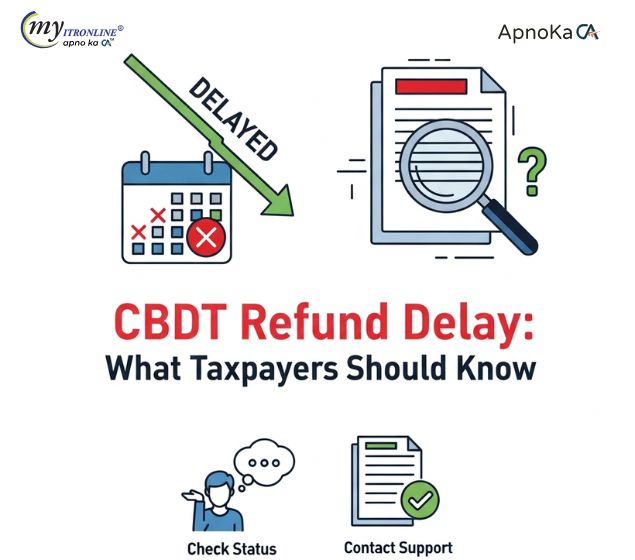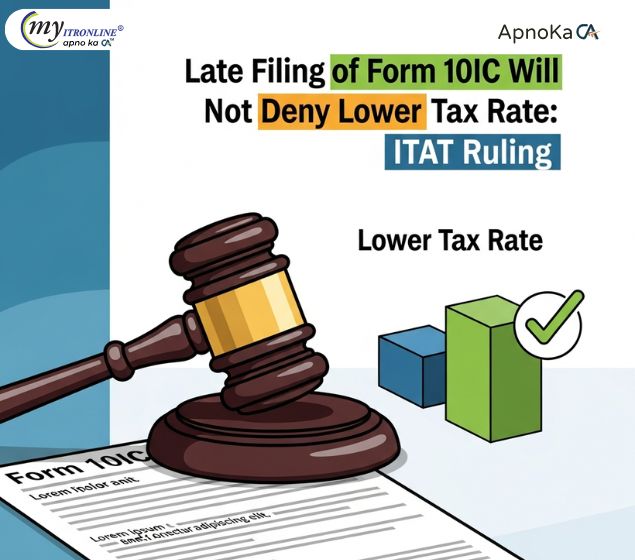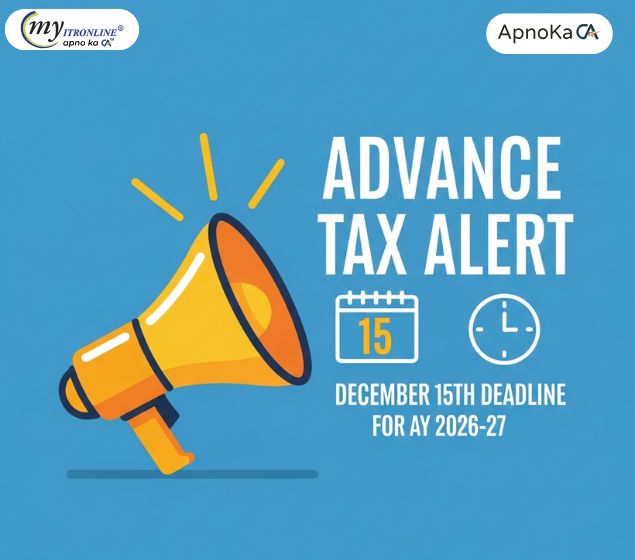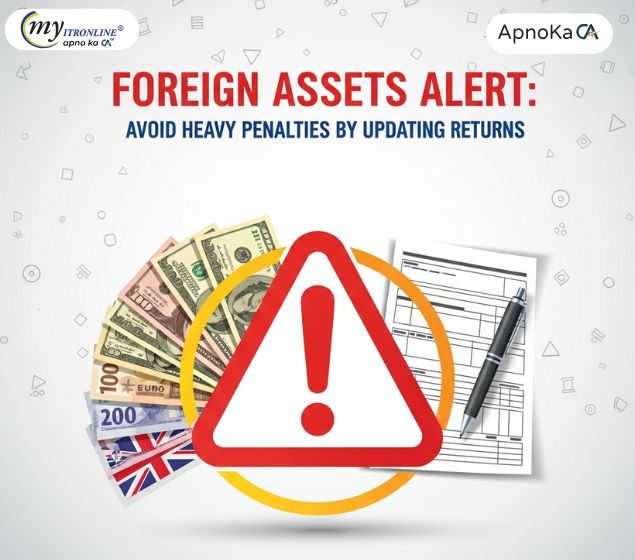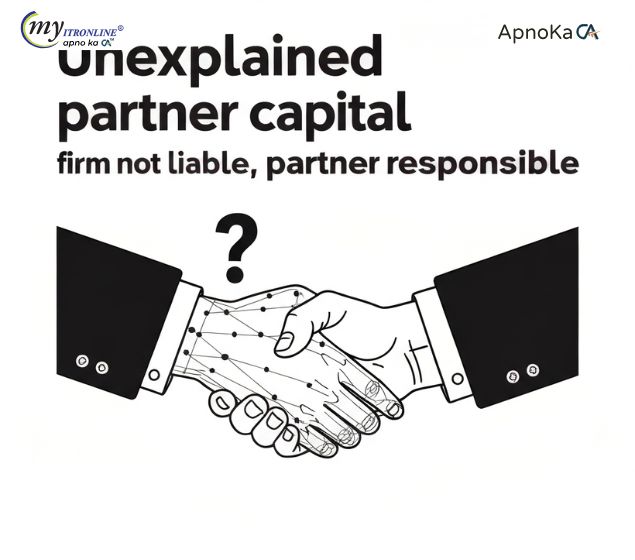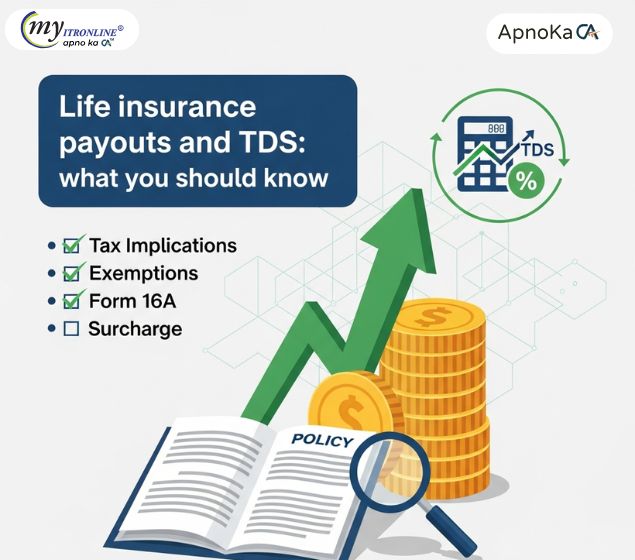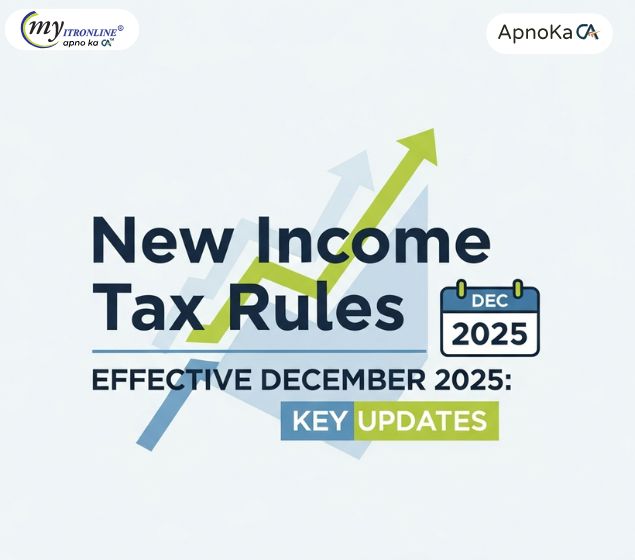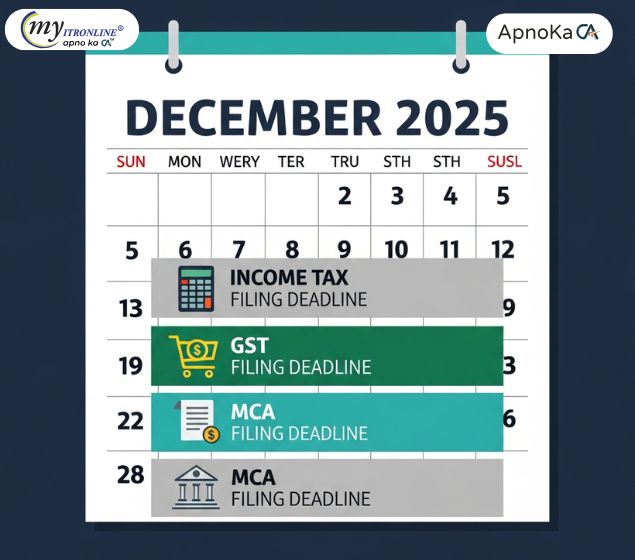Navigating Income Tax Notifications: Essential Insights for Salaried Employees in India
Receiving an income tax notification can be intimidating, especially for salaried professionals. This comprehensive guide demystifies the reasons behind income tax notices in India, detailing common types (like 143(1), 139(9), 143(2), 148, and 156) and providing a step-by-step approach on how to respond effectively. Learn about discrepancies in income/TDS, defective returns, high-value transactions, and best practices to prevent such communications.
.jpg )
Receiving a notification from the Income Tax Department can often spark a sense of anxiety. For salaried professionals, who typically depend on their employer for TDS and Form 16, such correspondence can seem especially alarming. However, it's important to recognize that an income tax notification isn't inherently a warning sign of misconduct. In many cases, it represents a routine communication from the department seeking clarification, addressing minor discrepancies, or simply updating you on the status of your Income Tax Return (ITR) processing.
This comprehensive guide aims to clarify why salaried individuals in India might encounter income tax notifications, the various types of notifications they may face, and most importantly, how to respond to them effectively.
What Causes Salaried Employees to Receive Income Tax Notifications?
Even with a seemingly simple income from a single employer and the assistance of Form 16, salaried employees may unexpectedly receive an income tax notification. Below are the most common explanations:
1. Discrepancies in Income/TDS Information: This is likely the most common reason. The Income Tax Department has access to multiple data sources, including Form 26AS, Annual Information Statement (AIS), and Taxpayer Information Summary (TIS). If the income or TDS details reported in your ITR do not match these records, a notice is quite possible. This may result from:
- Employer Mistakes: Occasionally, your employer could make an error in depositing TDS or filing their TDS returns, creating a mismatch.
- Unreported Income: You might have inadvertently or deliberately failed to disclose other sources of income like interest from savings accounts or fixed deposits, rental income, capital gains from investments, or income derived from freelance work/side jobs.
- Incorrect TDS Claims: The TDS claimed on your ITR may not correspond with the TDS recorded in Form 26AS.
2. Defective Return (Section 139(9)): Your ITR might contain mistakes or incomplete information, rendering it "defective." Common issues include:
- Mismatched personal information (e.g., address, PAN).
- Incorrect tax computations.
- Absence of mandatory schedules or attachments.
- Claiming deductions without proper substantiation.
- Using an inappropriate ITR form for your income profile.
3. High-Value Transactions Undisclosed: The Income Tax Department gathers information from various agencies regarding high-value transactions. If you have conducted any of the following without properly reflecting them in your ITR, brace yourself for a notice:
- Cash deposits or withdrawals from bank accounts exceeding specified limits (e.g., ₹10 lakh or more in a savings account in a financial year).
- Credit card payments exceeding ₹2 lakh.
- Investments in mutual funds, shares, bonds, or debentures surpassing certain thresholds.
- Sale or purchase of a property exceeding ₹30 lakh.
4. Excessive or Invalid Deduction Claims: If you assert deductions or exemptions (like HRA, LTA, or those under Section 80C, 80D, etc.) that lack genuine proof, seem unusually high, or are deemed fraudulent (for example, fake rent receipts), the department will seek clarification.
5. Non-Filing or Late Filing of ITR: If you are legally obligated to file an ITR but fail to do so or file it after the designated due date, you may receive a notice requesting an explanation or instructing you to file.
6. Undisclosed Foreign Income/Assets: If you possess any income earned abroad or hold foreign assets and do not disclose them as per Indian tax regulations (for instance, in Schedule FA of your ITR), it could prompt a notice.
7. Unaddressed Previous Notices: Failing to respond to earlier communications from the Income Tax Department may result in more severe notifications, which could include penalties and legal action.
8. Random Scrutiny (Section 143(2)): Occasionally, a taxpayer's case may be chosen for an in-depth examination (audit) on a random basis, as part of the department's initiative to promote compliance with tax regulations universally.
Common Types of Income Tax Notices for Salaried Employees
Recognizing the particular section under which a notice is issued is crucial, as it dictates the nature of the inquiry and the necessary response. Below are the most typical forms of income tax notices that salaried individuals may receive:
1. Intimation under Section 143(1):
- What it is: This should not be regarded as a punitive "notice," but rather an intimation sent following the preliminary assessment of your ITR. It verifies whether your tax calculation aligns with the department's records, if you are entitled to a refund, or if there exists a tax demand (i.e., underpayment of tax).
- Reasons for mismatch: Simple mathematical mistakes, incorrect claims evident from the return (e.g., claiming a deduction that is not applicable), or inconsistencies with Form 26AS/AIS/TIS data.
- Response: If there are no discrepancies or you are due a refund, typically no action is needed. If a payment is requested, you must settle the outstanding tax or submit a rectification request under Section 154 if you believe the demand is inaccurate. Generally, you are allotted 30 days to reply.
2. Notice under Section 139(9) - Defective Return:
- What it is: This notice is issued when your submitted ITR is deemed "defective" due to mistakes, omissions, or incomplete information that hinders proper processing.
- Common defects: Mismatched personal information, erroneous tax calculations, absent required schedules, use of the incorrect ITR form, or inconsistencies in TDS claims.
- Response: You are usually given 15 days from the notice date to rectify the issues by submitting a revised return. Ignoring this deadline may result in your original return being regarded as null and void.
3. Notice under Section 142(1) - Inquiry Before Assessment:
- What it is: This notice is sent when the Assessing Officer (AO) needs additional information or documents prior to finalizing your assessment. It can be issued even if you have yet to file your return, instructing you to do so.
- Reasons: Requesting clarification on particular transactions, assets, liabilities, or income sources that appear unusual or need further explanation.
- Response: You must provide the requested information and documents within the designated timeframe. Failure to comply can lead to penalties or even a "best judgment assessment," where the AO estimates your income.
4. Notice under Section 143(2) - Scrutiny Notice:
- What it is: This is a more serious type of notice, signifying that your tax return has been chosen for a thorough scrutiny (audit) to confirm the correctness of your income, deductions, and tax payments. It frequently follows a Section 142(1) notice if the AO finds the initial response unsatisfactory or if specific conditions for scrutiny are satisfied.
- Scrutiny Types: Scrutiny can be classified as "limited," concentrating on specific areas such as tax credits or high-value transactions, or as "complete," involving a thorough investigation of the entire return and financial matters. Cases are frequently chosen through Computer-Assisted Scrutiny Selection (CASS).
- Response: A detailed response is necessary, including all supporting documents and comprehensive explanations for each aspect questioned by the Assessing Officer (AO). It is strongly recommended to obtain professional assistance from a tax advisor or Chartered Accountant (CA) when handling this type of notice. Typically, the notice should be served within three months following the conclusion of the assessment year.
5. Notice Under Section 148 - Income Escaping Assessment:
- Definition: This notice is issued when the AO believes that certain income has "escaped assessment" in a previously filed return, indicating it was not fully declared, evaluated, or taxed. This allows the department to reopen earlier assessments.
- Causes: The emergence of new information (e.g., from AIS, TIS, or third-party sources), undisclosed income or assets, or major under-reporting of income.
- Response: You will need to provide details of your income for the specified financial year along with supporting documentation. The time frame for issuing this notice has been updated, generally extending to three years after the end of the related assessment year, and up to ten years if the escaped income exceeds ₹50 lakh.
6. Notice Under Section 156 - Demand Notice:
- Definition: This notice is a direct demand for payment of any outstanding tax, interest, or penalties determined by the Income Tax Department. It is usually issued after an assessment has been finalized.
- Causes: Caused by under-reporting of income, disallowance of deductions, calculation mistakes, or existing unpaid tax dues from prior years.
- Response: You are required to pay the stated amount within 30 days of receiving the notice. If you contest the demand, you have the option to file a rectification request under Section 154 or appeal against the assessment order.
7. Notice Under Section 245 - Adjustment of Refund Against Past Demand:
- Definition: This notice is sent when the department plans to offset a refund owed to you in the current assessment year against any outstanding tax liabilities from previous years.
- Response: You generally have 30 days to agree or disagree with the suggested adjustment. If you do not respond, it may be taken as your acceptance, and the refund will be applied accordingly. If you disagree, you must provide reasons as to why the past demand is invalid or has already been settled.
How to Respond to an Income Tax Notice: A Step-by-Step Guide
Receiving an income tax notice can be stressful, but it's vital to approach it calmly, methodically, and promptly. Here’s how to respond efficiently:
1. Stay Calm and Acknowledge It: The worst course of action is to ignore a notice, as this can lead to fines, increased tax obligations, and possible legal proceedings. Read it thoroughly.
2. Verify the Notice: Before taking any steps, confirm that the notice is authentic. You can check its validity by logging into your e-filing account on the official Income Tax Department's website (www.incometax.gov.in/iec/foportal/) under the "Pending Actions" or "e-Proceedings" sections. Search for the Document Identification Number (DIN), which serves as a unique identifier for all communications from the department.
3. Examine the Notice Thoroughly and Grasp its Context:
- Determine the particular section under which the notice is issued (e.g., 143(1), 142(1)). This indicates the rationale for the notice.
- Note the Assessment Year (AY) to which it relates.
- Comprehend the precise reason for its issuance and the specific information or action that is required from you.
- It’s important to recognize the deadline for your response.
4. Collect All Relevant Documentation: Gather all supporting documents concerning the matters raised in the notice. This may include:
- Your Income Tax Return (ITR) for the applicable assessment year.
- Form 16/16A (provided by your employer/deductors).
- Form 26AS, Annual Information Statement (AIS), and Taxpayer Information Summary (TIS) for the concerned period.
- Bank statements.
- Investment proofs (for deductions under Section 80C, 80D, etc.).
- Rent receipts (for HRA claims).
- Documentation of capital gains/losses.
- Any other financial statements or documentation relevant to the inquiry (e.g., property transaction documents, loan statements).
5. Craft a Clear and Concise Reply:
- Acknowledge Receipt: Begin by confirming receipt of the notice, referencing the notice number, DIN, and date.
- Address Each Point: Respond to every point or query presented in the notice clearly and methodically. Utilizing bullet points or numbered lists can enhance clarity.
- Provide Factual Explanations: Offer factual clarifications for any discrepancies or issues identified. Steer clear of emotional tone.
- Reference Documents: Clearly mention and attach all supporting documents that corroborate your claims. Ensure these documents are well-organized, properly labeled, and in the required format (generally PDF for online submissions).
- Maintain a Professional Tone: Keep your language formal and courteous in all communications.
6. Submit Your Response Promptly:
- Online Submission: Most responses can and should be submitted online via the e-filing portal under the "e-Proceedings" or "Compliance" section. This approach ensures fast delivery and a digital record.
- Physical Submission (if necessary): If a physical submission is required or preferred, use registered post or speed post and retain the acknowledgment receipt for your files.
- Adhere to Deadline: Strict compliance with the deadline is essential. If you anticipate a delay, you may request an extension with valid reasons, although it may not always be granted.
7. Seek Professional Assistance if Necessary: If the notice is intricate (e.g., a scrutiny notice under Section 143(2) or reassessment under Section 148), involves considerable amounts, or if you're uncertain how to reply accurately, it’s advisable to consult a tax professional such as a Chartered Accountant (CA) or tax lawyer. They can offer expert guidance, draft the response, and even represent you during proceedings.
8. Keep an Eye Out for Further Correspondence: After you submit your response, consistently check your email, the e-filing portal, and physical mail for any follow-up queries or subsequent notices from the department. Respond promptly to these as well.
Preventing Income Tax Notices: Recommended Practices for Salaried Individuals
While some notices are routine, many can be avoided by practicing diligent tax habits throughout the year:
1. Accurately File Your ITR and on Time: This is the most important rule. Verify all income figures, deductions, and TDS amounts against Form 16, Form 26AS, AIS, and TIS before submitting your ITR. File your return well in advance of the due date to prevent last-minute mistakes.
2. Reconcile Form 26AS/AIS/TIS: Regularly check your Form 26AS, AIS, and TIS to ensure that all your income and TDS details align with what the Income Tax Department has on record. If any discrepancies arise, promptly get them corrected by the deductor (your employer or bank).
3. Disclose All Income Sources: Make sure to include every source of income, regardless of its size or whether TDS has already been withheld. This encompasses interest from savings accounts or fixed deposits, rental income, capital gains, dividends, or earnings from freelance work.
4. Keep Well-Organized Records: Maintain orderly documentation of all your financial transactions, proof of investments, rental receipts, premium payment confirmations, and other relevant papers for a minimum of 6-8 years. These records will prove crucial if you receive a notice requiring you to validate your claims.
5. Be Cautious with High-Value Transactions: If you partake in substantial financial transactions, as previously mentioned, ensure these are accurately detailed in your Income Tax Return (ITR), or be ready to clarify their origins.
6. Only Claim Legitimate Deductions: Do not attempt to claim deductions or exemptions for which you do not legitimately qualify, or use fraudulent receipts. The Income Tax Department employs sophisticated data analytics to uncover such inconsistencies.
7. Refresh Your Contact Information: Verify that your PAN, Aadhaar, updated mobile number, and email address are accurate and current on the Income Tax Department's e-filing platform to receive timely notifications.
8. Avoid Relying on Unverified Information: Always consult official government resources or seek advice from qualified tax professionals for tax guidance.
Conclusion
Receiving a notice from the income tax department can be stressful, but it is part of the tax administration process. By comprehending the typical reasons for notices, recognizing the various types, and responding promptly and accurately with supporting evidence, salaried individuals can effectively manage these communications. Proactive tax planning, careful record-keeping, and timely compliance are your best strategies against potential income tax notices, ensuring a smoother tax experience.
FILING YOUR INCOME TAX RETURN F.Y 2024-25 (A.Y. 2025-2026) WITH MYITRONLINE
The income tax filing deadline is right around the corner. If you haven’t filed yet, do it today with Myitronline! Avoid last minute rush and file your tax return today on MYITRONLINE in Just 5 mins.(www.myitronline.com)
If you are looking for eCA assistance to file your income tax return/ GST, you can opt for MYITRONLINE eCA assisted plan starting
Upload Salary Individual Form-16
If you have any questions with filing your tax return, please reply to this mail. info@myitronline.com OR call 9971055886,8130309886.
Note-All the aforementioned information in the article is taken from authentic resources and has been published after moderation. Any change in the information other than fact must be believed as a human error. For queries mail us at marketing@myitronline.com
Krishna Gopal Varshney
An editor at apnokacaKrishna Gopal Varshney, Founder & CEO of Myitronline Global Services Private Limited at Delhi. A dedicated and tireless Expert Service Provider for the clients seeking tax filing assistance and all other essential requirements associated with Business/Professional establishment. Connect to us and let us give the Best Support to make you a Success. Visit our website for latest Business News and IT Updates.
Leave a reply
Your email address will not be published. Required fields are marked *Share this article
Krishna Gopal Varshney, Founder & CEO of Myitronline Global Services Private Limited at Delhi. A dedicated and tireless Expert Service Provider for the clients seeking tax filing assistance and all other essential requirements associated with Business/Professional establishment. Connect to us and let us give the Best Support to make you a Success. Visit our website for latest Business News and IT Updates.
View articles








